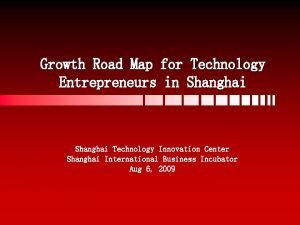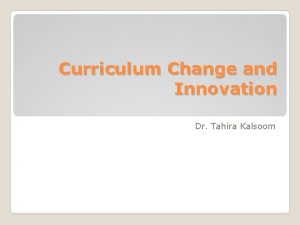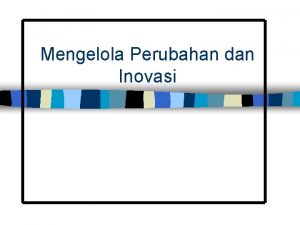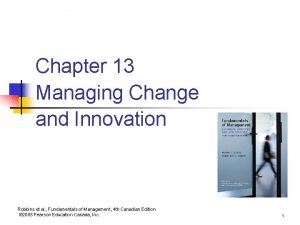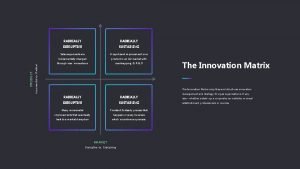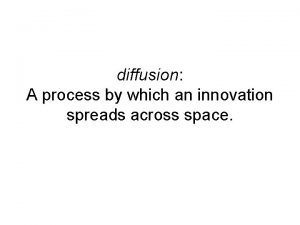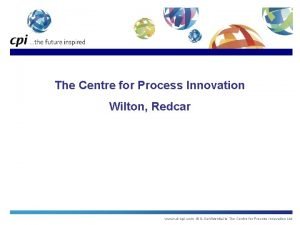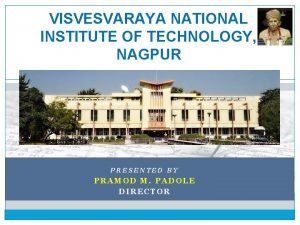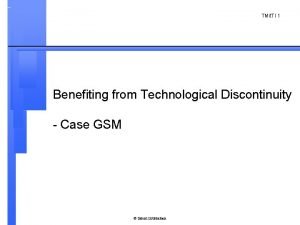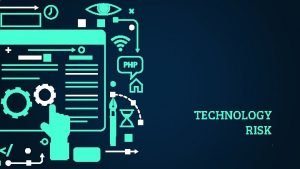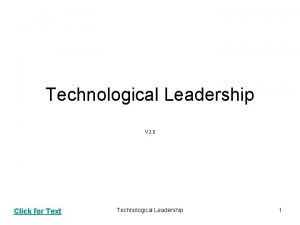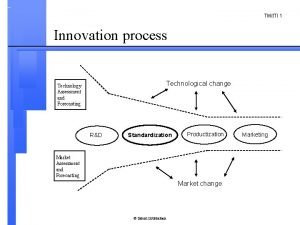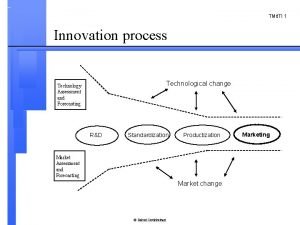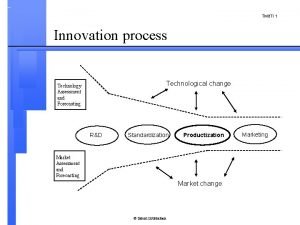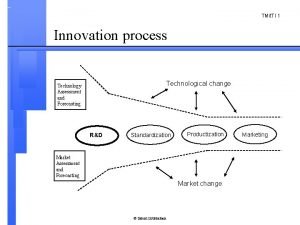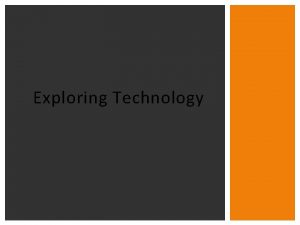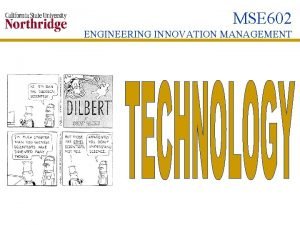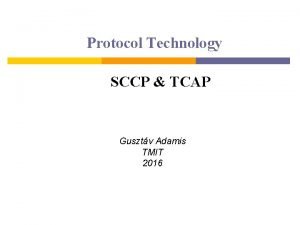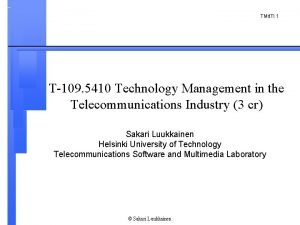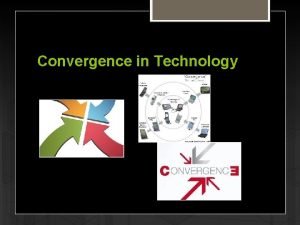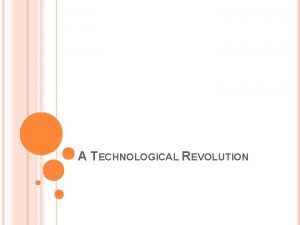TMit TI 1 Innovation process Technological change Technology






















- Slides: 22

TMit. TI 1 Innovation process Technological change Technology Assessment and Forecasting R&D Standardization Productization Market Assessment and Forecasting Market change © Sakari Luukkainen Marketing

TMit. TI 2 Content • Market uncertainty (Gaynor) • Recognizing lock-in (Varian chapter 5) • Managing lock-in (Varian chapter 6) • Networks and positive feedback (Varian chapter 7) © Sakari Luukkainen

TMit. TI 3 Technology cycle Technological Substitution Technological Discontinuity Variation Technological Discontinuity Era of Incremental Change Variation Era of Incremental Change Era of Ferment Selection Dominant Design © Sakari Luukkainen Era of Ferment Selection Dominant Design

TMit. TI 4 What is market uncertainty • Market uncertainty relates to the inability of vendors and service providers offering new communications solutions to predict what are the latent end users needs • The uncertainty exists partly also because users do not know what they want until they see and use it • When users are first introduced to new technology they tend to view it in the context of the older technology • Users needs evolve hiearchically from basic features to more sophisticated ones along with the technology evolution as they become more educated about the benefits it provides © Sakari Luukkainen

TMit. TI 5 Market uncertainty and Internet • A similar phenomen has happened with the Internet • Nobody predicted in the early 90´s what Web is today and its impact to society • Understanding market uncertainty affects directly to R&D • When Netscape started its development there was extreme uncertainty, it altered the traditional sw development process in a way that allowed taking into account early feedback from users © Sakari Luukkainen

TMit. TI 6 Managing market uncertainty • The only way to meet uncertain markets is to experiment several ideas and hope at least one will work • When market uncertainty is high, being lucky with correct guess about the market is likely to produce more revenue than being right in markets with low uncertainty • In high uncertainty competition is feature based and low price based • The use of distributed architecture in the introduction phase of new communications platform when the market uncertainty is high • Centralized management structure should then be used in later phases of the cycle when the technology and market is mature © Sakari Luukkainen

TMit. TI 7 Recognizing Lock-in • Investments in varying complementary assets related to the actual ICT investment influence switching costs • When the switching costs from one brand to another are substantial, customers face lock-in • Sonera & Radiolinja example: low number of moving customers before portability of telephone number • iki. fi e-mail solution to reduce switching cost • Proprietary interfaces © Sakari Luukkainen

TMit. TI 8 Recognizing Lock-in • Existing installed customer base with high switching cost is significantly valuable asset • Collective switching costs, group pricing of mobile calls • Total switching cost = costs the customer bears + costs the new supplier bears • The present discounted value to a supplier of locked-in customer is equal to total switching costs, plus the quality or cost advantage of current supplier’s product © Sakari Luukkainen

TMit. TI 9 Type of Lock-in Switching Costs Contractual commitments Compensatory or liquidated damages Durable purchases Replacement of equipment Brand-specific training Learning new system Information and db Converting data to new format Specialized suppliers Finding of new supplier Search costs Learning about quality of altern. Loyalty programs Lost benefits from existing supplier © Sakari Luukkainen

TMit. TI 10 Managing Lock-in – Customer view • Bargaining before lock-in taking into account lifecycle cost • Being aware about whole cost structure before investment decision, e. g. maintenance contracts are typically offered afterwards • Second sourcing and open systems • Long view to the next supplier choice situation • Keeping record about perceived cost structure © Sakari Luukkainen

TMit. TI 11 Managing Lock-in – Supplier view • Investments to build large installed base • Concentrating on influential customers with high switching costs • Differential pricing • Being aware of customer`s timing in brand selection points • Reselling and bundling of complementary products and long maintenance contracts • Usage of purchase history of existing customers in the marketing of new products © Sakari Luukkainen

TMit. TI 12 Market Share (%) Positive Feedback 100 Winner 50 Battle zone Loser Time © Sakari Luukkainen

TMit. TI 13 Adoption Dynamics Number of Users Saturation Critical mass Takeoff Launch Laggards (16%) Late majority (34%) Early adopters (13, 5%) Innovators (2, 5%) Time Source: Rogers, 1995 © Sakari Luukkainen

TMit. TI 14 Internet Servers 120 80 40 0 1991 1993 1995 © Sakari Luukkainen 1997 1999 2001 Source: Koski, H. , Rouvinen, P. , & Ylä-Anttila, P. (2001)

TMit. TI 15 Fax-service © Sakari Luukkainen Source: Varian

TMit. TI 16 Demand-side Economies of Scale Value to User Virtuous cycle Vicious cycle Number of Compatible Users © Sakari Luukkainen

TMit. TI 17 Networks and Positive Feedback • Increasing returns to scale (economies of scale) exist when the cost per unit decreases as more units of the good are produced. • Recently, the term "increasing returns to scale" has been used to describe more generally a situation where the net value of the last produced unit [= (€ amount consumers are willing to pay for the last unit) (average per unit cost of production)] increases with the number of units produced. This effect can be called also demand side of economies of scale. © Sakari Luukkainen

TMit. TI 18 Networks and Positive Feedback • A network exhibits network externalities when the value of a subscription to the network is higher when the network has more subscribers. • Metcalfe´s law: n * (n-1) = n 2 – n • Dominant design is a technology that wins the allegiance of the market place, it usually takes the form of a new product (or a set of features) synthesized from individual technological innovations introduced independently © Sakari Luukkainen

TMit. TI 19 Networks and Positive Feedback • Virtual Network is a collection of compatible goods (that share a common technical platform). • In a virtual network externalities arise because larger sales of component A induce larger availability of complementary components B 1, . . . , Bn, thereby increasing the value of component A. The increased value of component A results in further positive feedback. • For example, all VHS video players, cassettes and accessories make up a virtual network. Similarly, all computers running Windows or mobile phones and their accessories can be thought of as a virtual network. © Sakari Luukkainen

TMit. TI 20 Compatibility Performance vs Compatibility Evolution Improved Design or adapters Revolution Performance © Sakari Luukkainen

TMit. TI 21 Your Share of Industry Value Openness vs Control Proprietary Optimum Your Reward Open Total Value Added to Industry © Sakari Luukkainen

TMit. TI 22 Generic Network Strategies Control Openness Compatibility Controlled migration Open migration Performance play Discontinuity © Sakari Luukkainen
 Importance of technological innovation
Importance of technological innovation Postman undo changes
Postman undo changes Mysite.socccd
Mysite.socccd Incremental innovation vs disruptive innovation
Incremental innovation vs disruptive innovation Technological design loop
Technological design loop Technology forecasting
Technology forecasting Strategic issues in managing technology and innovation
Strategic issues in managing technology and innovation Shanghai technology innovation center
Shanghai technology innovation center Sources of curriculum change
Sources of curriculum change Managing change and innovation
Managing change and innovation Chapter 13 managing change and innovation
Chapter 13 managing change and innovation The calm waters metaphor
The calm waters metaphor The innovation process
The innovation process Sustaining vs incremental innovation
Sustaining vs incremental innovation Innovation spreads by the process of
Innovation spreads by the process of Quality and innovation in product and process design
Quality and innovation in product and process design Centre for process innovation limited
Centre for process innovation limited Innovation scouting process
Innovation scouting process Visvesvaraya technological university nagpur
Visvesvaraya technological university nagpur Technology discontinuity
Technology discontinuity Technology risk definition
Technology risk definition Technological modelling
Technological modelling Technological leader
Technological leader







